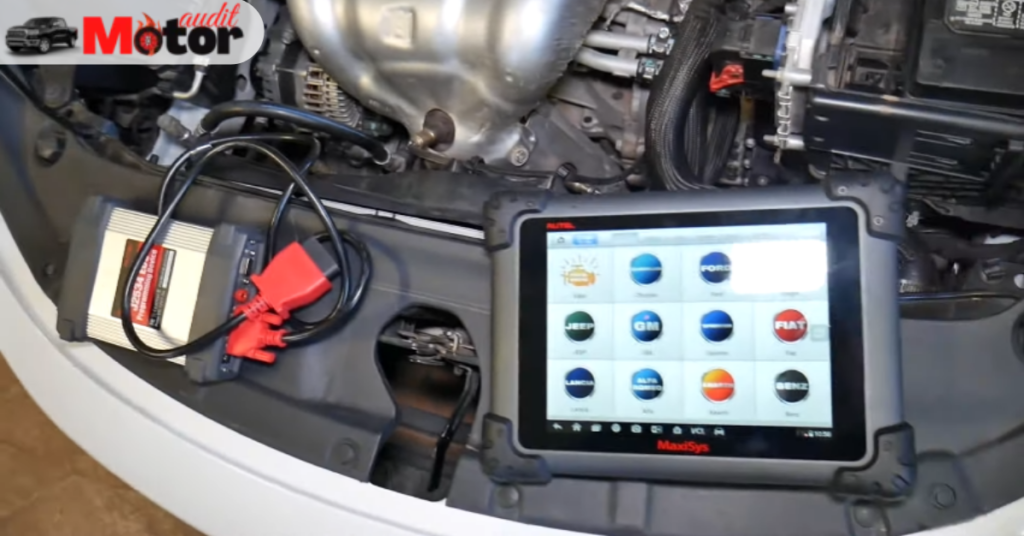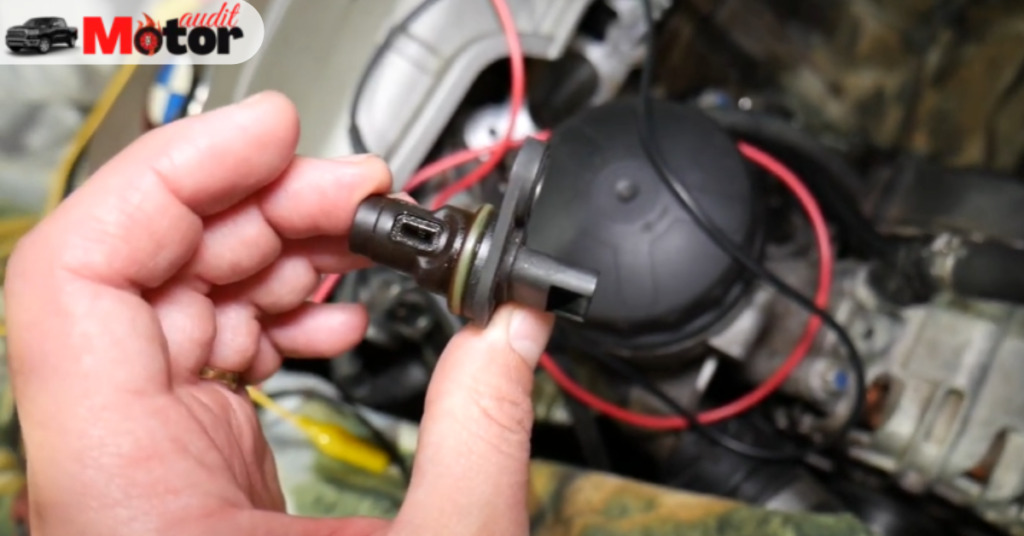How to Reset Crankshaft Position Sensor? (No Start Problem)
Have you invested in a total crankshaft replacement but can’t see any fruition in driving your good old automotive friend? If that is the case, and you are looking for ways on how to reset the crankshaft position sensor no start issue, you need more than just a replacement.
As you know, the prime task of your engine’s crankshaft is to convert linear energy into rotational energy that gives power to the wheels of the car. Unless that happens, the car wheels aren’t going to move one inch towards your destination.
Here, the crankshaft sensor helps to identify the spinning rate for the Engine Control Module. As a result, your engine can produce the right power only when the sensor is in harmony. So resetting it after you have replaced it, to make it work in sync is the right way to do it!

Can You Reset A Crankshaft Position Sensor?
Yes, but there’s a catch. This magnetic sensor reads the pickup from the crank in each of its rotations. Your car computer takes this data in and compares it simultaneously with the database information to ensure that they both are in sync.
Any detection of out-of-sync data and the computer triggers an engine code. And if your car is modern and smart enough, it will cut the power to the engine to prevent damage.
So you see, the sensor is responsible for detecting the magnetic field on each rotation of the shaft. You can’t obviously reset this detection. But you can replace the sensor AND “relearn” it to scoot off previously-stored trouble codes of the faulty sensor and resync it to the current new sensor status, which is what is meant by “resetting” it.
Does Resetting The Crankshaft Position Sensor Solve No Start Problem?
Yes. If your car shuts down intermittently without any warning and stalling has become a part of your commute, this no-start issue can be resolved by resetting the sensor.
By doing so, you can notice better fuel mileage and it is quite reasonable too! Once you replace and reset the sensor, your vehicle will be happy afterward!
When Should You Reset A Crankshaft Position Sensor?
If you have successfully replaced your crankshaft position sensor but are still seeing the no start issue, then it is time to reset it. In fact, you should reset the crankshaft position after the replacement, whether you are getting trouble codes or not.
That is because not resetting a CKP sensor can cause backfiring, restart failure, and similar other troubles that would give a poor running performance from the engine. To make sure that your CKP sensors are in sync with the ECM and the cams, you should reset it right after the replacement of a new one.
How To Reset Crankshaft Position Sensor
Many have the question that if your engine is running after the replacement of the crankshaft position sensor without any problem, what is the need to go through the relearning/resetting steps?
The importance is that any misfire will go undetected by the car computer. Resetting and relearning the system will help you misfires and trigger the check engine light or other indications which is very important for safe and secure, hassle-free riding in the future!
Now, there are 2 ways to do it, with and without a scanner. Below, you will find concise guides to both the methods of relearning and resetting the sensor.
Relearning Crank Sensor With A Scanner

After you have successfully replaced the previous faulty crank sensor, it needs to be resynced to the Power Control Module or the PCM. If you don’t do this bit, your (or your car’s) PCM will fail to determine the position of the crankshaft.
This entire process of relearning the crankshaft position sensor is called the “CKP (Crankshaft Position) Variation Learn.” With the help of this process, you can reset the positional information in the memory of your car’s PCM memory and replace it with the information from the new crankshaft sensor. The steps are as follows:
- First, you have to connect a system scanner to the car computer. This will make sure that there are no stored trouble codes in its memory from the previous sensor. The only code that you can have is the DTC P1336 CKP Variation Not Learned signal. If there are more codes than this, the car computer will automatically disable the relearning process until you resolve the problem that has caused this fault code.
- Now, set the brake, block the drive wheels and close the hood.
- Start the engine of your car. Make sure that the engine oil and coolant levels are optimal; the latter being at 158F. Now, shut down the engine for 10 seconds.
- Select CASE Learn on your scanner. This is going to prepare the crankshaft position sensor for the learning procedure. The transmission should be in Park.
- Now, you can start the engine, brake, and hold the pedal firmly.
- Take a look at the instructions on the scanner and follow them.
Here’s a small tip for you: You should increase the engine speed to 3000/400/5150 RPM depending on the instruction manual. This is the fuel cutoff RPM for Variation Learn. While the relearning procedure is going on for the sensor, you have to release the throttle immediately when you see the engine decelerating. This only means that the fuel cutoff is going into effect. If you don’t do this on time, it might result in over-revving of the engine, causing more damage.
- Now that your engine has gone to an idle state, you need to check the Diagnostic Trouble Code or DTC P1336. You have two possibilities here: the scanner may indicate that the CASE is learned and your CKP sensor relearning procedure is now complete.
What will you do if the CASE has not been learned? Then you have to use the DTC P1336 CKP Variation Not Learned for further diagnostic information and actions. Go back to step 1 and check if other powertrain codes are restricting the relearning process. If any of these codes exist, fix it and then repeat steps 2-7.
Resetting Crank Sensor Without A Scanner

Suppose you want to fix the crankshaft sensor without any scanner, then what? If you cannot access the relearn through your scanner (which is possible for some truck applications), you have to conduct the following steps:
- Switch off the accessories. Keep the coolant and air temperature sensor within 5C of each other and start the engine.
- Now, let the engine be idle in Neutral or Park position for 2 minutes.
- At part throttle, accelerate your car to 55 mph. Cruise at this speed for as long as 10 minutes. The engine should reach its operating temperature by then.
- Even after that, cruise at the same speed for another 5/6 minutes.
- Now, reduce the speed to 45 mph without braking it and maintain this stance for 1 minute.
- Conduct 4 such deceleration cycles with 25 seconds each, minus the brakes and without any speed specification. Return to the 45 mph count for 15 seconds in between those deceleration cycles.
- Next, accelerate your car to 55 mph and cruise at this speed for another 2 minutes.
- Lastly, stop your car and keep it idle for 2 minutes. The transmission should be in Drive or Neutral with the clutch depressed.
How Long Does It Take To Reset?
If you use the method that includes the usage of a scanner, the scanning process itself will take 10 minutes. Other than that, the entire process can be finished within 30 minutes to an hour, depending on your professionalism and ability to conduct the steps.
Final Words
So you have finally learned and resolved how to reset the crankshaft position sensor no start issue! As you saw, it can be easily resolved with a scanner, where you can perform the CKP Variation Learn or you can resolve it without a scanner, which involves resetting it through acceleration and deceleration cycles, with the transmission in your favor as you need it.
If it so happens that your car computer is not allowing any relearning, check with a professional for more inherent and severe symptoms that could lead to engine damage before it’s too late!
- Read Also>> Why Car Battery Light On But Alternator Is Charging?
- Read Also>> Why My Car Blowing White Smoke But Not Overheating? (Fixed)
- Read Also>> Can You Mix Red and Green Antifreeze? (Explained)
- Read Also>> 4 Symptoms To Detect A Bad IWE Solenoid: (Must Know)
- Read Also>> Who Makes Icon Tools and Where Are They Made? (Explained)
